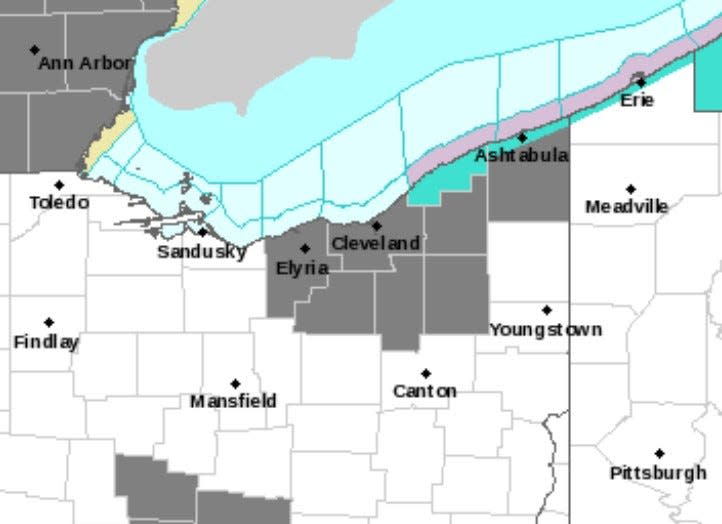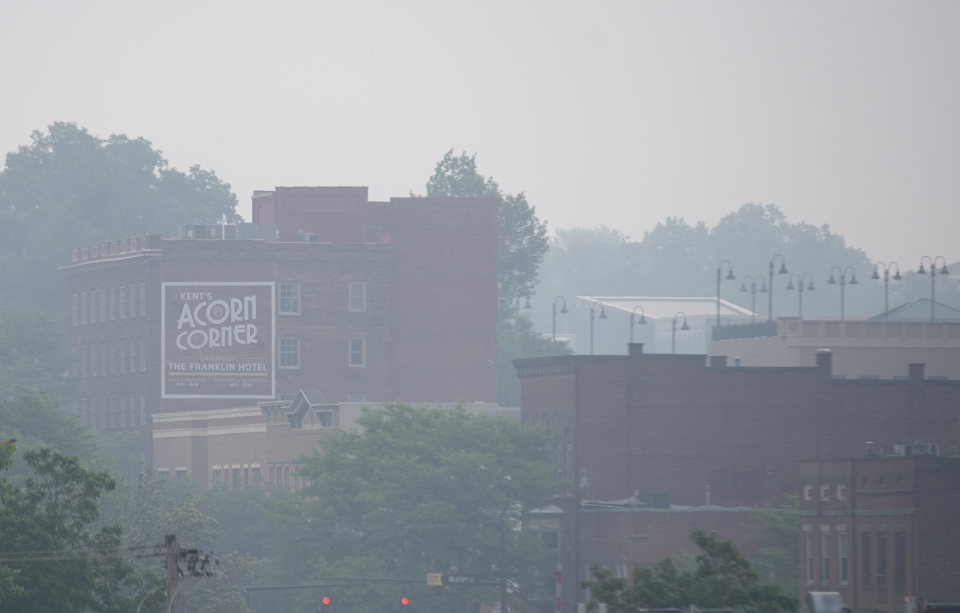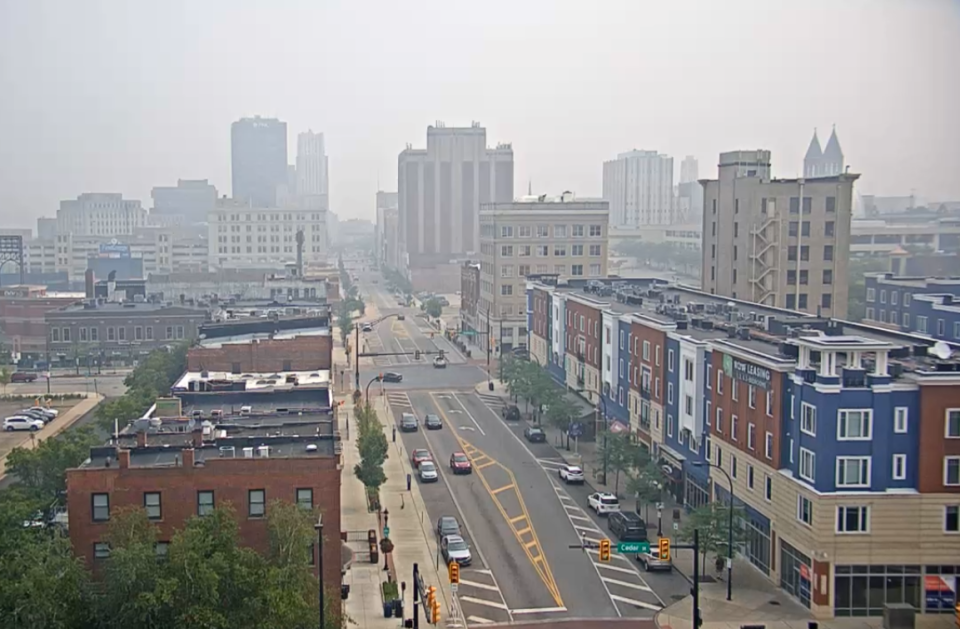Akron, Northeast Ohio remain under Air Quality Advisory from wildfires in Canada
Smoke from Canadian wildfires is easing across Northeast Ohio, but the air quality remains "unhealthy" according to tracking site AirNow.gov.
The National Weather Service in Cleveland has issued Air Quality Advisory for fine particulate matter until midnight Thursday. Affected counties include Ashtabula, Cuyahoga, Geauga, Lake, Lorain, Medina, Portage and Summit.
The Ohio Environmental Protection Agency also extended its air quality advisory through Thursday. The agency stated that it expects the Air Quality Index to be in the “unhealthy for sensitive groups” to “very unhealthy” ranges.
That means anyone in a sensitive group – including young children, older adults or those with heart and lung disease – should stay indoors for any physical activity, and everyone else should limit the amount of time they are active outdoors.

Air Quality Index is 'unhealthy' for Akron, Northeast Ohio
The air quality tracking site AirNow.gov ranks Akron air as "unhealthy," with a score of 163. That's an improvement from the "very unhealthy" score of 272 on Wednesday morning. The site, a partnership between the EPA, NWS, NASA and others, ranks Akron's air worse than Beijing, China (54), and Dubai, United Arab Emirates (133).
US air quality map
Which US city has the worst air quality?
Three U.S. cities ranked among the top five major cities in the world with the worst air quality Wednesday morning: Detroit, Chicago and Minneapolis, according to IQ Air's live ranking of major world cities. Washington, D.C., made the top 10.
According to AirNow.gov, huge swaths of the Midwest had air quality in at least the red, or "unhealthy" level, including most or all of the states of Iowa, Wisconsin, Illinois, Indiana, Ohio, Michigan and Pennsylvania. Parts of Minnesota, Missouri, Kentucky, West Virginia, Virginia and New York were also in the red on a national map.
The air was "very unhealthy" − purple on the air quality index map − in parts of Wisconsin, Iowa, Illinois, Indiana, Ohio, Pennsylvania and Michigan.
Where are the wildfires in Canada?
There were 500 active wildfires burning throughout Canada as of Thursday, according to the Canadian Interagency Forest Fire Centre. Of those, 257 are considered out of control.
It's one of the worst wildfire seasons on record for the country. Smoke from wildland fires burning in Quebec has even reached parts of southwestern Europe, NASA's Earth Observatory reported on Monday. Soot particles reached across 2,000 miles of the Atlantic Ocean, causing hazy skies in Europe. Air quality there is mostly fair because the particulates are higher in the atmosphere, NASA said.
Smoke from wildfires in Canada has drifted right across the Atlantic Ocean and is now evident on satellite imagery across western Europe
🌅 Whilst the smoke is high up in the atmosphere, it may make for some vivid sunrises and sunsets in the next few days pic.twitter.com/VSBPx0jH5n— Met Office (@metoffice) June 26, 2023
Experts say the number of fires in Canada will increase in the coming years. And scientists said early this month that human-caused climate change will lead to more fires in the U.S. So whether it's future Canadian fires or the wildfire season in the U.S., odds are you'll encounter toxic smoke in years to come, which has prompted health experts to warn of the smoke's dangers.
"If the air quality outdoors is really bad, stay indoors as much as possible," says William P. Bahnfleth, an engineer and a professor of architectural engineering at Penn State University. "If you must go out in the smoke wear an N95 mask outdoors, and avoid heavy exertion."

How to filter out wildfire smoke in your home
Because staying indoors is your best protection from toxic smoke, experts recommend giving your house a wildfire checkup.
Professor of Civil and Environmental Engineering at Virginia Tech Linsey Marr says, "The overall goal is to keep the outdoor air outside and to clean the indoor air as much as possible." Marr and Bahnfleth offer these tips:
Keep your windows closed.
“If your system brings in outdoor air, turn off the outdoor air supply. Outdoor air is often brought in by an energy recovery ventilator that can be switched off independently,” says Bahnfleth.
If you have central HVAC, put in the highest efficiency filters that they can accommodate (MERV 11 or higher desired), and set the fan to run continuously. Residential HVAC systems usually recirculate air and do not bring in outdoor air so by running the fan you are using the system as a whole-house air cleaner.
How to improve the air inside your home during a wildfire

Run bathroom and kitchen exhaust fans only as needed. They end up pulling outdoor air into other parts of the residence.
If you have a portable air filtration unit, like a HEPA air purifier that removes particles from the air, run it on high.
If you have a window AC unit, check to see that the filter is installed correctly. Run it with the fan on high to circulate air through the filter and remove as many particles as possible. Most units use recirculated air only and do not pull in outdoor air. A small minority have a setting that allows you to control the amount of outdoor air, and you should set these to zero outdoor air.
This article originally appeared on Akron Beacon Journal: 'Unhealthy' Air Quality Index in Akron Ohio made by Canadian wildfires

